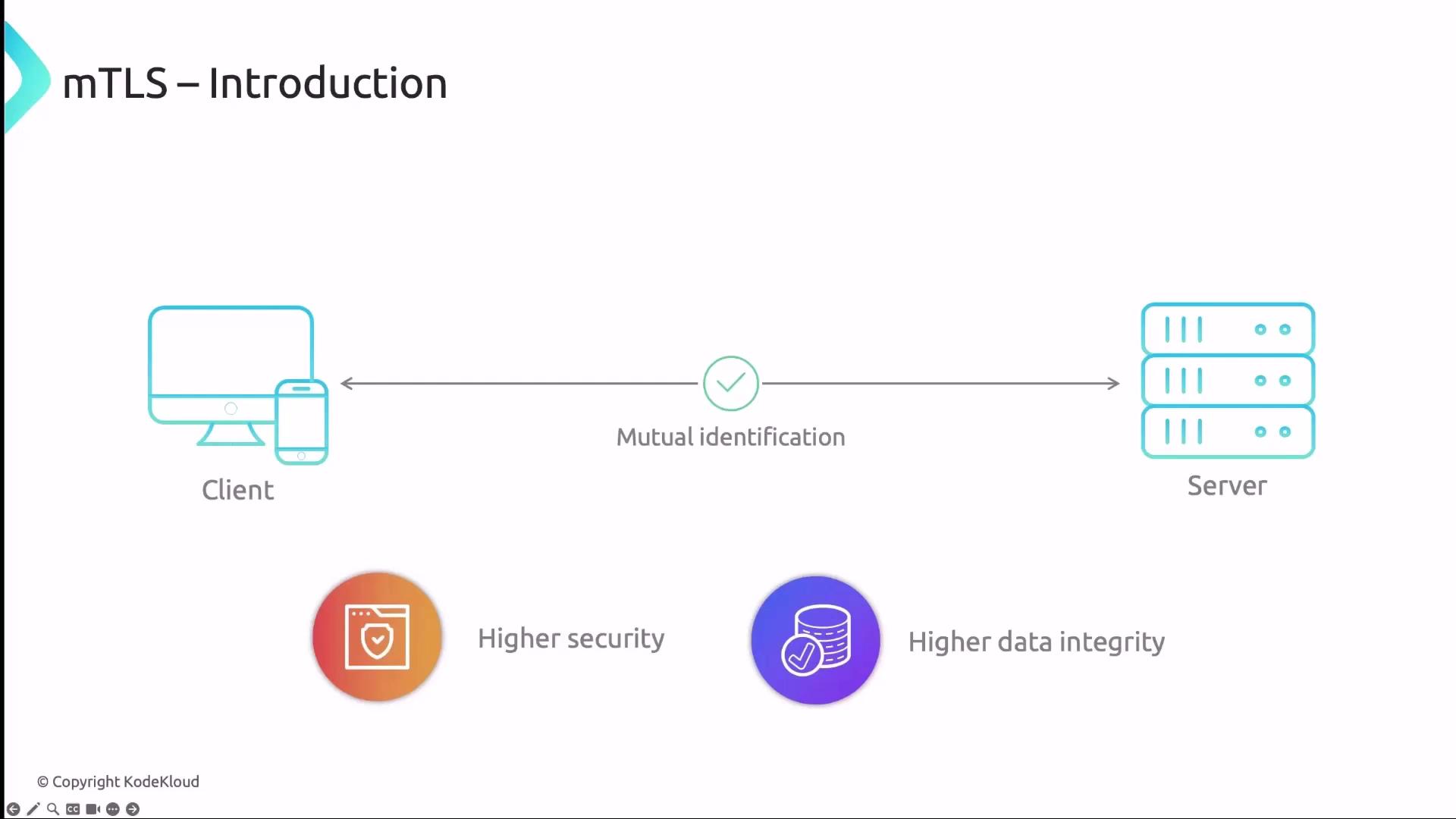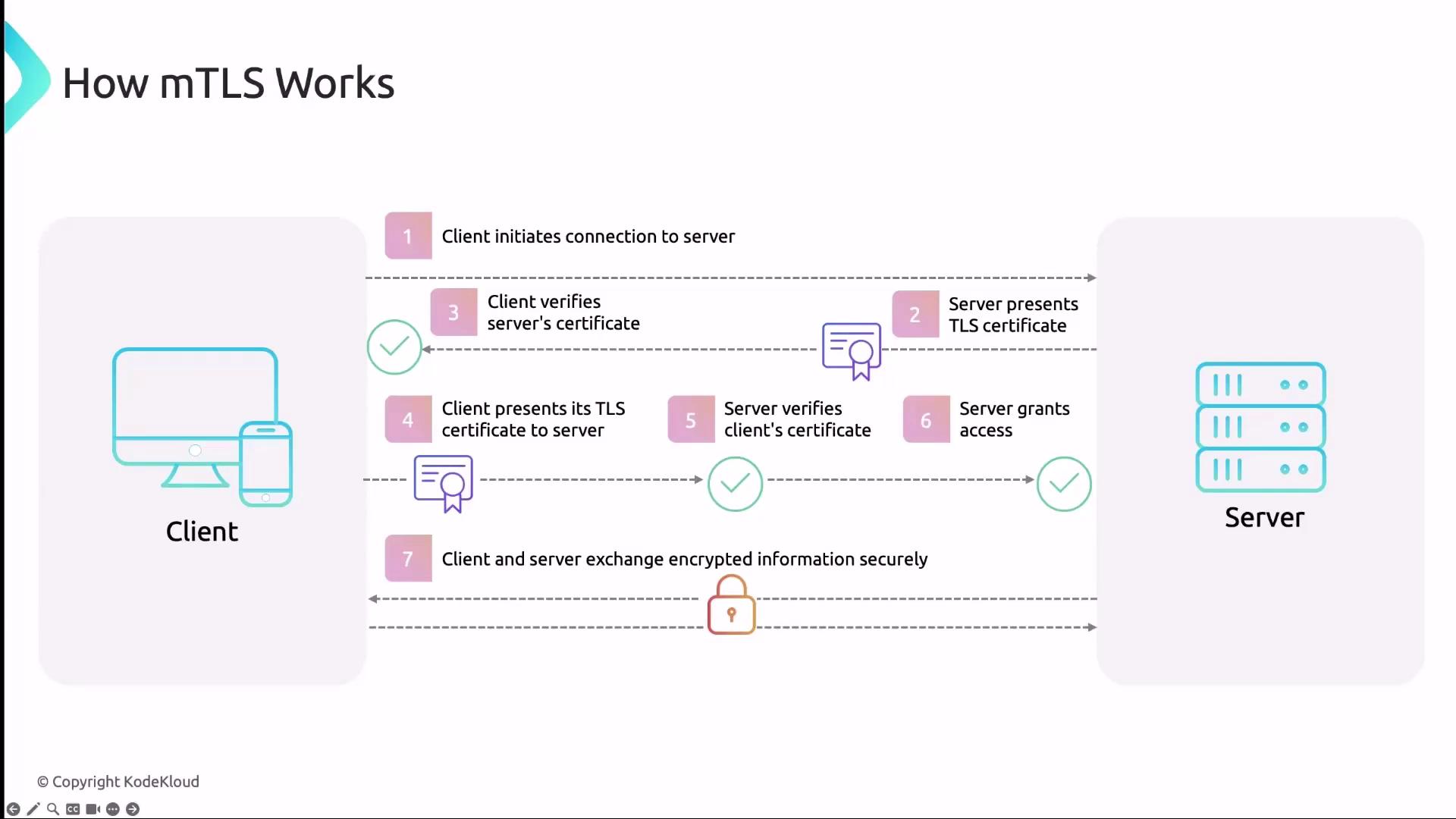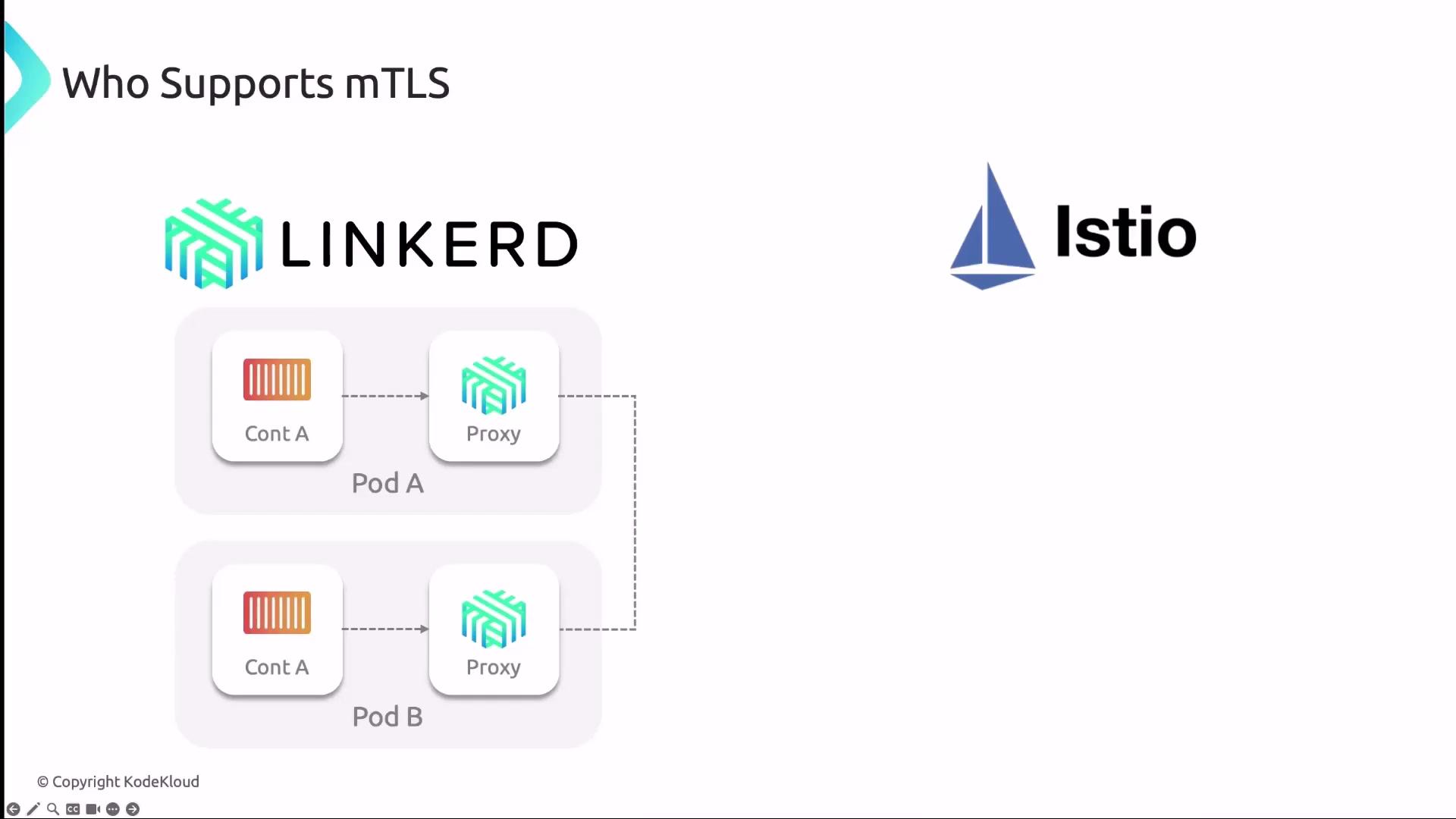Kubernetes Networking Deep Dive
Network Security
mTLS Overview
In this lesson, you’ll learn the fundamentals of mutual TLS (mTLS) and how it enhances security for service-to-service communication in Kubernetes. Although we’re not enabling mTLS on our Company X cluster right now, understanding these concepts is vital for any production-grade environment.
What Is mTLS?
Mutual TLS (mTLS) is an extension of standard TLS that enforces authentication for both client and server using X.509 certificates. In a traditional TLS handshake:
- Client sends a Client Hello.
- Server responds with a Server Hello and presents its certificate.
- Client verifies the server’s certificate.
mTLS adds two more critical steps:
- Client sends its own certificate to the server.
- Server verifies the client’s certificate.
This bidirectional verification ensures end-to-end encryption, prevents impersonation, and eliminates man-in-the-middle attacks.

Note
Before deploying mTLS, ensure you have a Certificate Authority (CA) in place. Tools like Cert-Manager can automate certificate issuance, rotation, and revocation.
How mTLS Works
The mTLS handshake extends the standard TLS flow with certificate exchange on both sides:
- Client Hello: Client initiates the handshake.
- Server Hello + Certificate: Server replies with its certificate.
- Server Verification: Client validates the server’s certificate against a trusted CA.
- Client Certificate: Client presents its certificate to the server.
- Client Verification: Server validates the client’s certificate.
- Secure Channel Established: Both parties exchange encrypted data over the secure channel.

Key Benefits of mTLS in Kubernetes
| Benefit | Description |
|---|---|
| Enhanced Security | Enforces mutual authentication to confirm both endpoints’ identities. |
| Man-in-the-Middle Protection | Prevents interceptors from decrypting or spoofing messages without valid certificates. |
| Data Integrity | Guarantees end-to-end encryption to protect confidentiality and message integrity. |
| Regulatory Compliance | Helps meet GDPR, HIPAA, PCI DSS, and other security standards. |
| Automated Certificate Management | Offloads cert lifecycle tasks (issuance, renewal, revocation) to tools like Cert-Manager. |
| Zero-Trust Alignment | Requires authentication for every connection, reinforcing a zero-trust security posture. |
mTLS in Service Meshes
Several service meshes and CNI plugins offer built-in mTLS capabilities:
Linkerd
Linkerd injects a lightweight sidecar proxy into each pod to:
- Manage all inbound/outbound traffic.
- Perform mTLS handshakes automatically.
- Rotate short-lived certificates via its control plane.
Istio
Istio leverages Envoy sidecars:
- Istio’s built-in CA issues and auto-rotates certificates.
- Sidecars exchange and verify credentials against the Istio root CA.
- Establish encrypted tunnels between services.

Cilium (Beta)
Cilium’s mTLS support is currently in beta. Refer to the official Cilium documentation for setup instructions and caveats.
Best Practices for mTLS in Kubernetes
- Automate certificate lifecycle with Cert-Manager or a similar tool.
- Deploy a service mesh (Istio, Linkerd) to simplify policy enforcement and certificate rotation.
- Integrate mTLS validation into CI/CD pipelines to catch misconfigurations early.
- Provide training and run regular workshops on certificate troubleshooting.
- Keep operational runbooks and troubleshooting guides up to date.
Warning
mTLS adds CPU/memory overhead for encryption and certificate checks. Plan resource allocation accordingly.
Challenges and Considerations
- Performance overhead from encryption/decryption and additional handshakes.
- Increased infrastructure and tooling costs.
- Complexity in configuring and managing certificates—even with automation.
- Compatibility gaps in legacy or third-party services.
- Operational complexity requiring deeper security expertise.
![]()
Further Reading
Watch Video
Watch video content